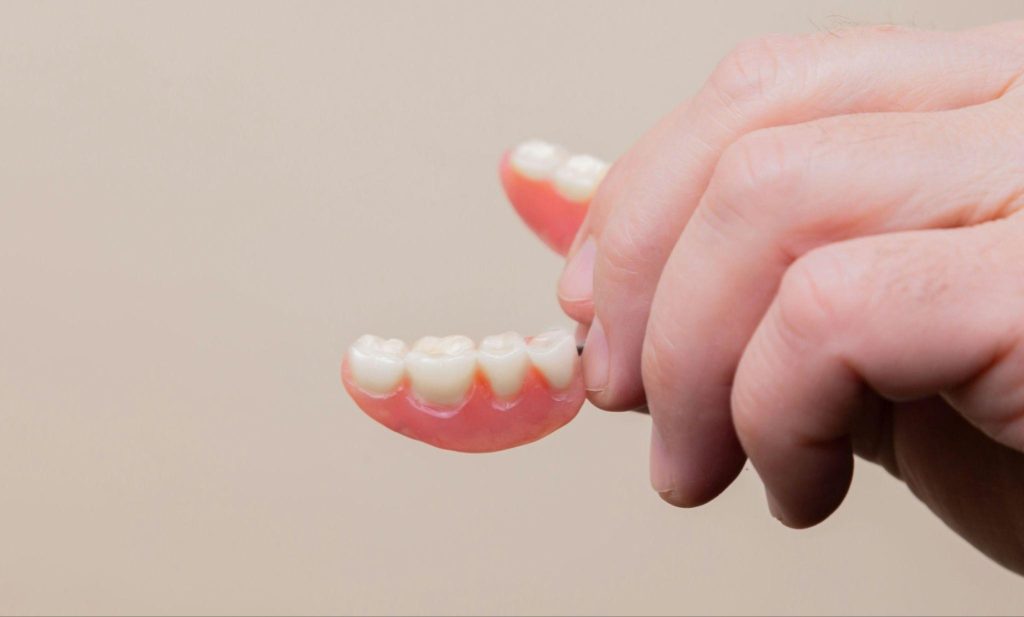Temporary dental crowns are protective caps that fit over damaged or weakened teeth. These temporary caps are needed to protect a tooth that a dentist has prepared for a more permanent crown. Temporary crowns help keep the surrounding teeth aligned while the permanent crown is made.
Most dentists send your X-rays and other information to a lab, where the crown is created. While the patient waits for the permanent crown to be delivered, the temporary crown allows normal functioning, such as eating, drinking, and speaking, without pain.
What’s the Point of a Crown?
Temporary crowns ensure comfort while waiting for the completed permanent crown. Without the added protection of the temporary device, the patient is subject to discomfort from hot and cold foods and beverages, and cold from outside temperatures.
Permanent crowns can take two to three weeks to create, so a temporary solution offers aesthetic value and more natural function.
In addition to allowing patients to go about their daily lives, the temporary crown helps keep the tooth core left behind after shaping free from bacteria until the permanent crown is placed.
Difference Between Temporary and Permanent Crowns
Temporary crowns aren’t as strong as their permanent replacements. They are designed for a short lifespan, usually two to three weeks, which is approximately how long it takes to fabricate the permanent crown. They are typically made from acrylic or a metallic material.
The adhesive is also not designed to hold the crown for an extended period. Temporary dental cement or glue is used to attach to the gums. This will allow for easier removal once the permanent replacement is available.
During the waiting period until the permanent crown can be affixed to the gums, there are certain precautions the patient needs to follow. Here are a few tips:
- Be mindful of what you eat
- Avoid chewing on the side of the temporary crown
- Avoid eating sticky or hard foods that may pull at or crack the crown, including gum, ice, or anything that requires you to chew with a lot of force
Follow the dental staff’s advice regarding how long to wait before eating anything. This is usually only an hour after the temporary crown is inserted.
Risk of Forgoing a Temporary Crown
If, for whatever reason, a patient refuses the temporary fixture or they don’t notify the dental office should it come loose or fall out, it elevates the risks for further damage to the remaining core of the prepared tooth. Again, this can result in bacteria affecting the area and other nearby teeth or bridges shifting.
A loose crown can easily come off while eating and perhaps even be swallowed. In the worst-case scenario, this would require another visit to the dentist for a replacement. Dentists have seen all types of circumstances where temporary and even older permanent crowns have come loose.
Another risk is not performing the usual oral hygiene with a temporary crown. You should treat it like a natural tooth or a permanent crown. Brushing and flossing ensure the tooth’s remaining core won’t be damaged. The temporary device is designed to withstand regular brushing and flossing activities. Gentle brushing is all that is needed. Excessive pressure of vigorous brushing and flossing should be avoided.
The same can be said for using high-pressure water picks. When flossing, avoid pulling upwards to remove the floss. Gently pull the floss through the opening between the teeth.
Future of Dental Crowns
In recent years, some dental offices have purchased or rented laser cutting machines to generate new, permanent crowns in their own offices. Dentists take numerous X-rays and photos from different angles and directly transfer the data from their computer to the laser equipment. The permanent crown can be produced while the patient rests comfortably in one of the offices.
Like the ones manufactured elsewhere, these caps usually require some fine-tuning, like minor edge filing and polishing. When bonding the finished product, permanent dental cements designed for long-term application are applied to the core of the remaining tooth and gum. Common choices include resin and glass ionomer cements.
Crowns are one of the most valuable tooth repair options you have. If you believe you need a crown or are concerned about your dental health, call us today. We’re here to help.




